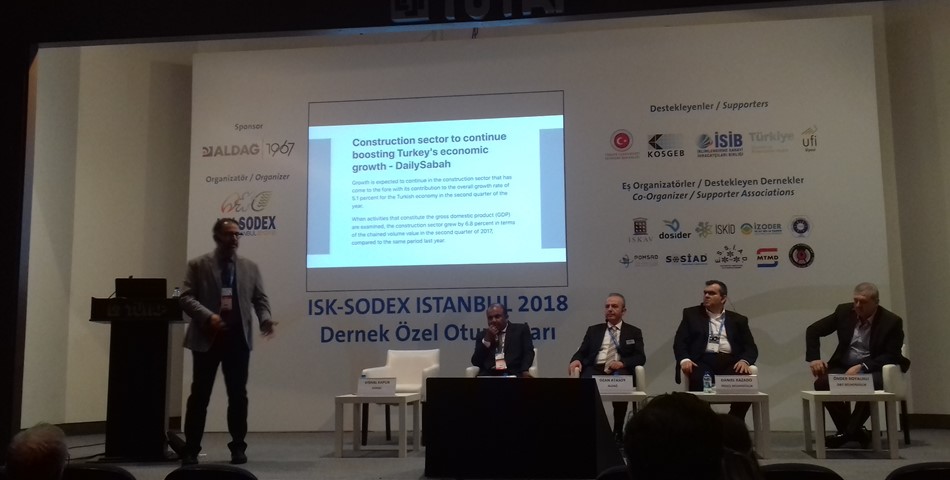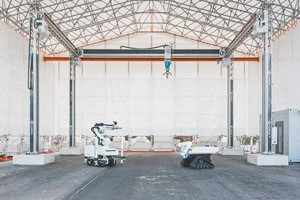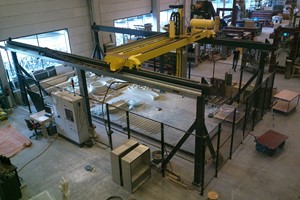constructionHQ attended ISK-SODEX in Turkey to capture the latest developments in the construction industry. BIM was one of the hot topics. A panel of BIM experts and professionals, representing manufacturers and contractors, gathered on a stage to discuss the challenges BIM is facing in the construction industry. BIM is a very good idea but how easy is it to implement? Perspectives from various professional backgrounds are shared in one discussion to form a 3D, more complete, picture of where BIM stands today and where it should be heading.
Building information modelling (BIM) is defined as a process involving the structured sharing and co-ordination of digital information on a building throughout its lifecycle. It relies on process, culture and technology. BIM’s potential is extensive and the benefits of implementation are numerous:
- Efficient processes with information shared more easily, for improvement and reuse
- Better design as building proposals are analyzed and turned into simulations. Their performance is benchmarked to ensure improved and innovative solutions.
- Environmental data improves environmental performance, whole life costs are better when understood.
- Better production quality using flexible documentation output.
- Automated assembly where digital product data can be exploited in downstream processes for manufacturing and the assembly of structural systems.
- Better customer service as proposals are understood through accurate visualization.
- Lifecycle data exposes the requirements, design, construction and operational information for facilities management.
Bimal Patwari, a BIM expert from Ishrae, explains that there are different levels of BIM implementation globally. “Factors delaying the process include lack of training and myths claiming it’s very difficult to implement. Different stages of maturity is observed across the world. It’s still not widely accepted because the full ecosystem is missing in some cases… It’s a collaboration process. Architects, engineers, contractors, facility managers, owners, everybody has to accept BIM for successful implementation.”
He uses the US as a good example where the government mandated BIM for use on large projects as well as smaller ones, including family housing, “in California BIM usage is almost at 100 percent. They have the ecosystem where BIM is well adopted.”


On clarifying the main requirements for successful implementation, he adds “BIM is all about pre construction. It’s currently used in Doha’s world cup stadium which will be completed in 2022. The detailing of the BIM model spans 36 months with daily details from agencies, on what needs to be completed on the project. It’s imperative all parties are involved. Owners have to understand the value in bringing everybody on board from the start, that’s why in US they emphasize integrated project delivery.”
But how can different parties be lured into complying? “Let’s suppose the budget is 100 million dollars for the client and they are able to execute it in 90 million dollars, the benefits are then shared across all stakeholders. These are formulas incentivizing all stakeholders by providing reward for optimizing construction and engineering. So there can be a piece of the pie for everyone in the game. Mature owners and contractors are trying to bring people onboard very early. It’s unfortunate that in many parts of the world, this isn’t happening more often. There are so many case studies and success stories where projects have undergone good BIM collaboration and have finished on time. If you look at the European commission, there’s a target of reducing the cost of construction by 25 percent; scheduling the time of completion by using BIM can reduce it by 50 percent. That’s why so many countries are making BIM compulsory. Singapore, UK, Europe, Australia and Dubai are all slowly making BIM compulsory for that very reason.”
Daniel Kazado, a BIM consultant from ProCS Muhendislik, offering a designer’s perspective, explains that BIM demands a cultural change. The contractor and designer must cooperate and meet at the table from the start. “Smart elements of a project shouldn’t be a luxury, it must be made readily available, and there is demand for design companies to use it. The information contained in the elements are very important. Spare parts for management need to have the correct, specific information. In which case they can transfer data to the model and check them in the program… A 2D version is usually submitted for approval, therefore the elements must also be able to work with 2D. Smart elements are not purely for design and construction but must comply at the operational level as well.”
Ozan Atasoy from Aldag, representing a manufacturer’s perspective, responds, “I guess manufacturers need to lead this process. If products are not ready, the contracting or design phase suffers. Global manufacturing is defining their product portfolio to integrate into BIM processes… Smart projects requiring BIM processes include smart products that can integrate into the system. Most manufacturers are still working on this, slowly progressing where the labour force is still being trained. The investors love the visual impact and the internationally recognized documentation.” Onder Boyalikli from D&T Muhendislik, offering a contractor’s perspective adds, ‘the contractor is at the center of the BIM process and in the heart of these matters. The entire process can be impacted negatively if our part is not executed properly, and there is strong competition globally.’
constructionHQ Staff














